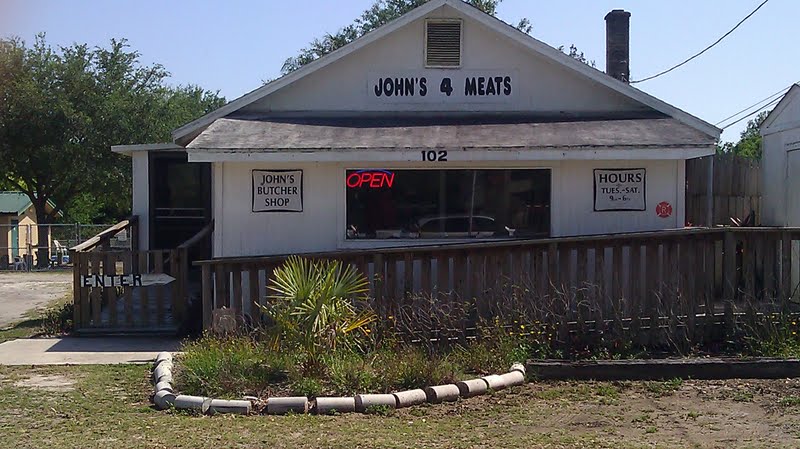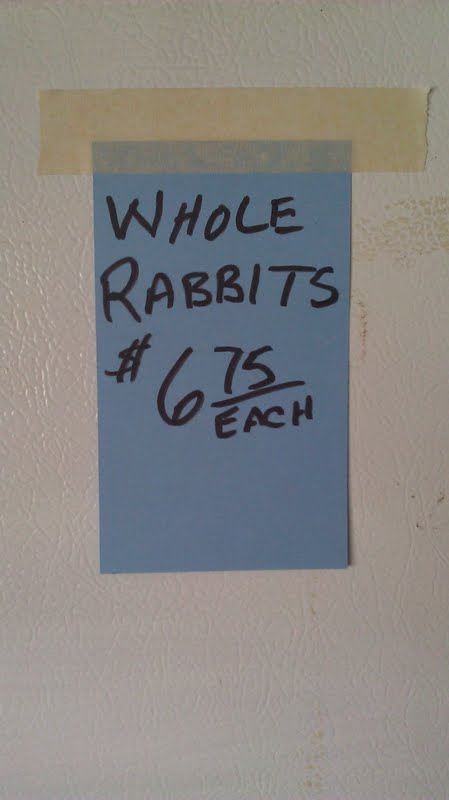Table of Contents[Hide][Show]

The loss of consumer contact with a local butcher whom they know and trust is one of the most damaging aspects of the rise of factory farms. The “butchers” of today are really not even butchers. They are simply specialty grocery workers who receive prepackaged and precut portions of meat off a delivery truck and arrange them in a desirable manner in the meat cooler section of the store.
It gets worse.
A common practice for supermarkets and even large healthfood store chains is to gas meat to keep it red even after the expiration date.
Finding a Local Butcher
Most consumers have never met a real butcher. This is someone responsible for the respectful slaughter and traditional meat processing of locally raised livestock.
Massive, USDA approved slaughterhouses have put an end to this time-honored, local profession. Moving the processing of animals as far away from the consumer as possible keeps the horrific practices of factory farming hidden from the public.
In some states, reporting on the secret abuses of factory farms is even illegal!

Better Quality and Prices
While I buy most of my meat from local, grassbased farms, I sometimes run out of certain cuts or bones for making homemade chicken or beef stock. It is sometimes hard to precisely estimate a family’s food needs several months ahead.
During those times when I need a local place to go that has quality meat and bones to fill the gap, John’s Butcher Shop fits the bill. It is as close to a traditional butchery as I have ever found in my community.
Founded in 1973, John’s Butcher Shop offers antibiotic and steroid free beef. The resident butchers cut it up fresh on the premises. The actual slaughter is done elsewhere, however.
In addition, John’s meats have never been frozen. This is a big deal as large food chains typically freeze/thaw their meat cuts. This can happen at least a couple of times before the consumer buys it.
I also love the fact that I am supporting a small, local business that has served my semi-rural community for many decades.
A wide variety of meats are frequently available including bison, seasonal rabbit, duck, and gator!
If you live anywhere near the old-time and very quaint downtown of Lutz, be sure to check out John’s Butcher Shop. It is a much healthier alternative to supermarket meat counters and even Whole Foods.
The prices are also more competitive and the quality of the meat just as good or better.








hi im a student at cal young middle school i whas wondering if you have eny infoon being a butcher im doing a care progect on it
Thank you for the reply, Sarah. It sounds like it’s matter of appearance, not nutrition or health. However, I could see where the feet would be easier to clean with the toenails off. I’ve always purchased them from farmers with the toenails/claws on, but they looked very clean. Since I hadn’t read otherwise before, I have cooked them with the toenails on, and yes, they do look grosser than they might without the nail. I have butchered quite a few chickens in my lifetime and I must admit that it is DEFINITELY a “mental” thing to get over. But get over it I did.
My married daughter tried cooking a beef hoof from one of their animals after she cleaned it meticulously, and it still smelled bad in the cooking process. She threw it all out to the dog. Have you any experience with using beef hooves? I’m guessing that they must have something done to them by the butcher before they ever reach our home….like maybe trimming off the entire bottom area. Does any one out there know? Maybe your local butcher would know…..
I read on a post for another topic that the claws are to be removed from chicken feet when making chicken broth. Do they impart something undesirable to the broth, or are they just unappetitzing? I recently read in the book Deep Nutrition to remove the claws, too, but except for these two sources, haven’t seen that specified. Anyone know more on this?
My farmer clips the toenails before the feet are cleaned. I put them in the stockpot as is. They do look pretty gross unclipped.
Heading to John’s today to p/u our Easter dinner! Mmmmmm …
Awesome, I think I may go by there today.
Hi Sarah! Do you think local WAP’ers would have info about to find butchers like thiis? I would love to find someone like this in my area. Thanks! Love your site 🙂
Contact your local WAPF Chapter Leader. You might find that he/she tracks local butchers as well as local farms. http://www.westonaprice.org/local-chapters/find-local-chapter
Thanks so much for sharing this!
John’s has been in the area for a LONG time! Growing up, we would call them to take care of our steers or pigs.
Thanks for the tip. We run out of our meat occasionally and I never know where to go. I will be going there soon…